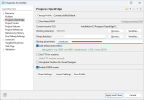JamesBowen
19+ years progress programming and still learning.
I'm looking at replacing the COM Automation of using MS Excel and using the ClosedXML. .net library.
It looks like is going to do everything I need but I just can seem to get to all the listed namespaces, properties and methods in the class browser.
Is the some sort of hidden trick when using the Progress Developer Studio when viewing .net libraries?
ref:

 github.com
github.com

 www.nuget.org
www.nuget.org
It looks like is going to do everything I need but I just can seem to get to all the listed namespaces, properties and methods in the class browser.
Is the some sort of hidden trick when using the Progress Developer Studio when viewing .net libraries?
ref:
GitHub - ClosedXML/ClosedXML: ClosedXML is a .NET library for reading, manipulating and writing Excel 2007+ (.xlsx, .xlsm) files. It aims to provide an intuitive and user-friendly interface to dealing with the underlying OpenXML API.
ClosedXML is a .NET library for reading, manipulating and writing Excel 2007+ (.xlsx, .xlsm) files. It aims to provide an intuitive and user-friendly interface to dealing with the underlying OpenXM...
ClosedXML 0.105.0
See release notes https://github.com/ClosedXML/ClosedXML/releases/tag/0.105.0 ClosedXML is a .NET library for reading, manipulating and writing Excel 2007+ (.xlsx, .xlsm) files. It aims to provide an intuitive and user-friendly interface to dealing with the underlying OpenXML API.



